Make Thailand’s Golden Threads Dessert
A recipe from the countess who ran the royal kitchens of Siam.
Last week, I wrote about the life and legacy of Maria Guyomar de Pinha, the Portuguese-Japanese countess turned Siamese palace chef nicknamed “the Queen of Thai Desserts.” In addition to being a harrowing tale of murder, betrayal, and political intrigue, Guyomar’s life story tells of a 17th-century culinary exchange between Portugal and Thailand whose reverberations continue today.
Few dishes demonstrate this better than foi thong, or “golden threads,” a treat that consists of fine strands of yolk cooked in sugar syrup infused with fragrant pandan leaves. Anyone familiar with Portuguese desserts will note how similar foi thong is to a Portuguese sweet called fios de ovos, meaning “egg threads.” The only differences are that foi thong features longer strands and vanilla-like pandan instead of vanilla.

Foi thong represents Portuguese techniques adapted to Thai ingredients and symbolic resonance. Along with its prosperous and lucky golden color, foi thong carries an additional layer of meaning because its long strands—longer than those of the Portuguese egg threads—represent a long and happy life. For this reason, foi thong may be served at Thai weddings. In modern Thailand, when foi thong is not being presented as part of the auspicious “Nine Desserts” for a special occasion, it can be eaten on its own or used as a garnish for desserts such as coconut rice and cakes.
View this post on Instagram
Portugal’s former colonial empire has resulted in culinary influence that can still be felt in many parts of Asia beyond Thailand: Even Japanese konpeito, the crunchy bits of rainbow-colored rock candy fed to the soot sprites in the film Spirited Away, derives from Portuguese confeito, meaning “confection” or “sweet.” This means that Thailand is not the only Asian country to serve egg threads, though everyone who adopted the recipe has tweaked it and made it their own, just as Guyomar did. Japanese egg threads, known as keiran somen after fine somen noodles, are twisted to resemble bundles of yarn and presented as a wagashi, a type of delicate sweet served with tea. In Kerala in southern India, the egg whites and the sugar syrup used to cook the yolk threads are made into a fluffy pudding, which is served together with the threads.
Foi thong is traditionally made with a funnel-like tool, but you can approximate it at home by poking a small hole in a Ziploc bag. Though not strictly necessary, vegetable oil may be added to the yolks to give them a glossier final appearance, and food coloring may be used to emphasize their lucky golden glow.
Foi Thong (Thai Egg Threads)
- Prep time: 20 minutes
- Cook time: 15 minutes
- Total time: 35 minutes
- 4 servings
Ingredients
- 6 egg yolks
- 2 cups water
- 1 cup white sugar
- 1/3 of a whole pandan leaf, or 1/2 a teaspoon pandan extract
Instructions
-
Remove the chalazae–the white “strings” that connect to the yolks–-and mix the yolks thoroughly with a fork. Put the blended yolks in a small Ziploc bag with as little air as possible.
-
Add the sugar and water to a wide pan or pot and bring to a boil over medium-low heat, stirring to make sure the sugar dissolves.
-
Once the sugar is melted and the syrup is bubbling, tie the pandan leaf into a knot and add it to the liquid.
-
Let the pandan leaf cook in the syrup for 7 minutes, then remove it and discard.
-
Twist the bag so that the egg yolks are pressed into one corner. Carefully cut the tip of the corner of the bag with scissors, or poke with a toothpick; you want the hole to be as small as possible. Gently squeeze the bag while holding it upright, so that any remaining air bubbles are released from the hole you made in the corner. The setup should look similar to a piping bag for icing.
-
Prepare a cooling rack with a dish or pan underneath to catch the drippings next to your syrup, as well as chopsticks or skewers to manipulate the egg threads.
-
With the syrup on a low boil, drizzle the egg yolk from the bag into the syrup, making seven to ten circles around the outer edge of your pan. Apply even, gentle pressure to the bag so that the egg threads come out the same size.
-
The egg threads will only take about 15 seconds to cook, floating at the surface. You want the mass of threads to remain ring-shaped as it cooks; if they start sticking together, use the chopsticks to separate them.
-
Once the threads look solid and darker in color, use chopsticks to fold them in half, then in half one more time to create a folded “package” of egg threads. Lift this from the syrup using chopsticks and lay it on the cooling rack.
-
Repeat this process until you’re done with the egg yolks. You should end up with about 4 folded packages of yolk, depending on the diameter of your pot.
- Eat cold on its own, or use as a garnish.
Notes and Tips
Pandan leaves, which have a flavor similar to vanilla and are commonly used in Southeast Asian desserts, can be purchased frozen or dry from stores that carry Southeast Asian groceries, for example from the Philippines or Thailand. After you cook the egg threads, the extra pandan-flavored simple syrup can be used in other desserts or added to beverages.
Gastro Obscura covers the world’s most wondrous food and drink.
Sign up for our regular newsletter.



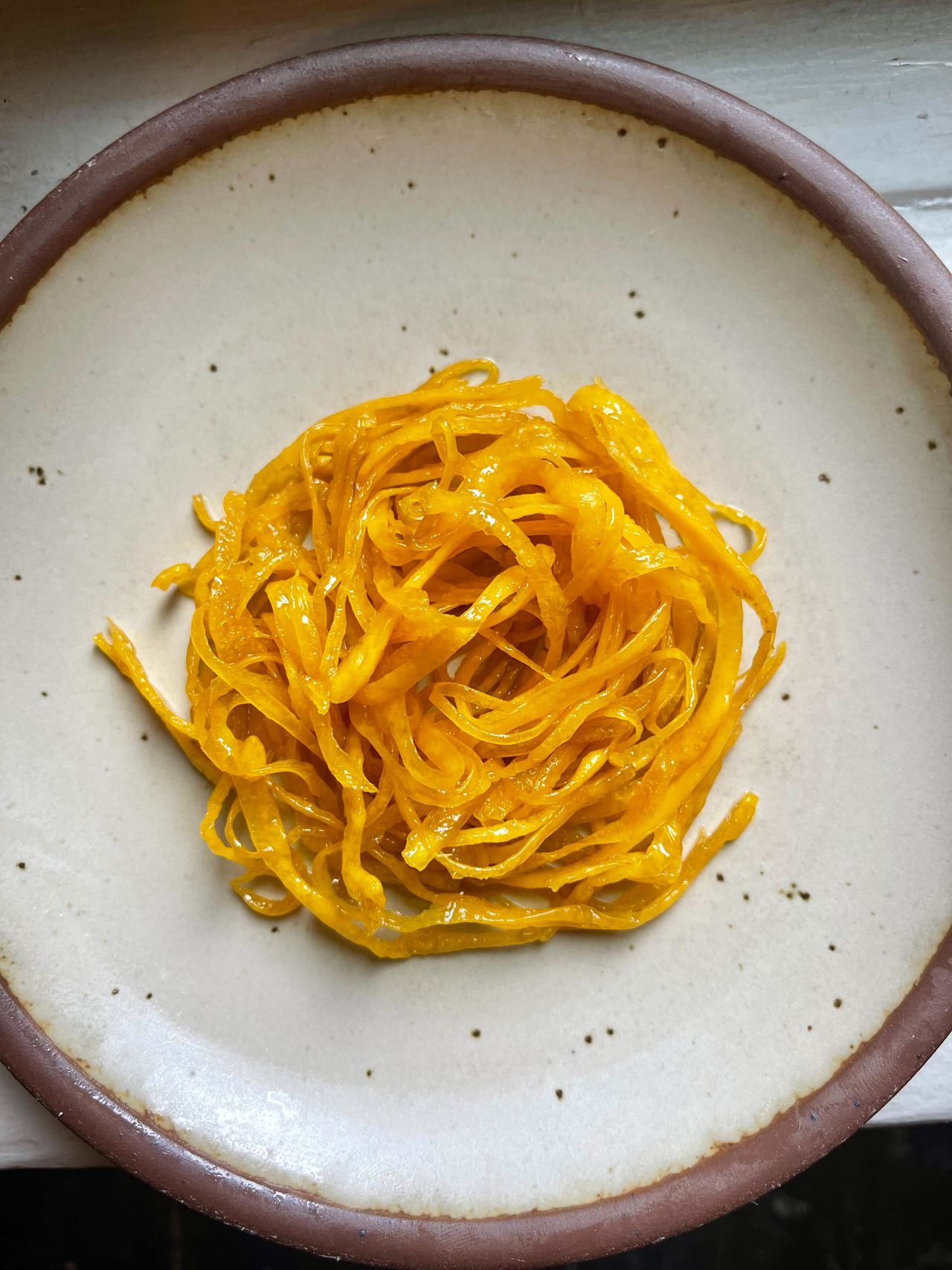



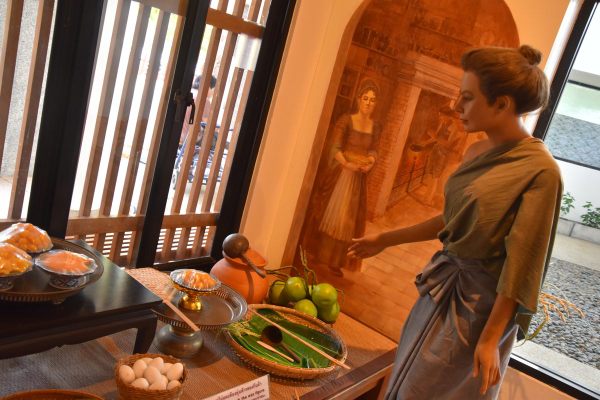

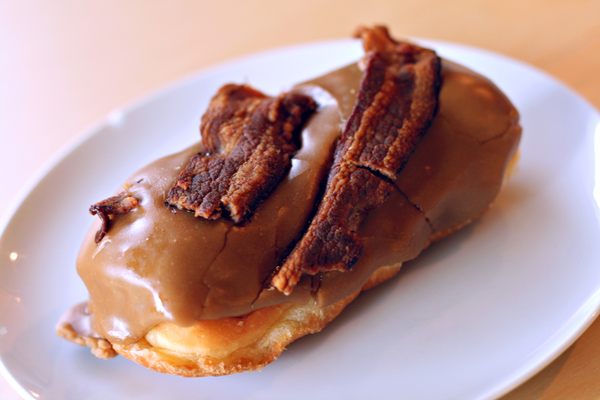
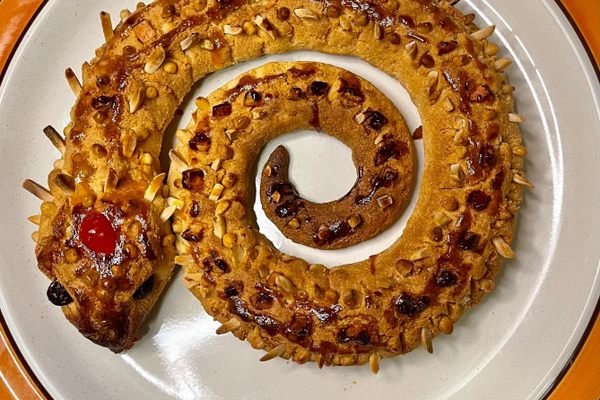






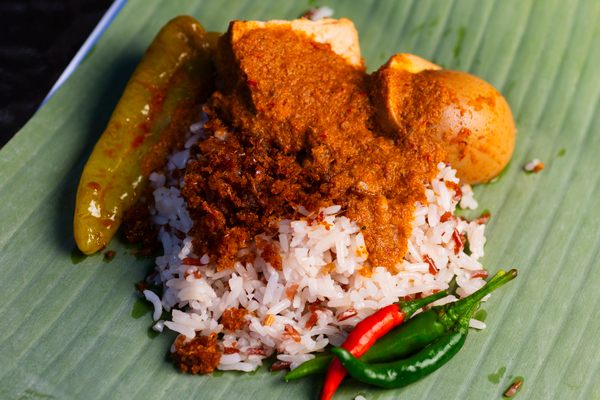


Follow us on Twitter to get the latest on the world's hidden wonders.
Like us on Facebook to get the latest on the world's hidden wonders.
Follow us on Twitter Like us on Facebook